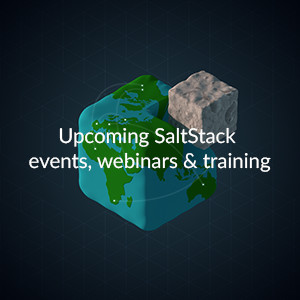You are viewing docs from a branch that is no longer active. You might want to view docs for the 2015.8.x release instead.
Tutorials¶
Introduction¶
Basics¶
States¶
Advanced Topics¶
- SaltStack Walk-through
- MinionFS Backend Walkthrough
- Automatic Updates / Frozen Deployments
- Multi Master Tutorial
- Multi-Master-PKI Tutorial With Failover
- Preseed Minion with Accepted Key
- Salt Bootstrap
- Git Fileserver Backend Walkthrough
- Installing Dependencies
- Simple Configuration
- Multiple Remotes
- Per-remote Configuration Parameters
- Serving from a Subdirectory
- Mountpoints
- Using gitfs Alongside Other Backends
- Branches, Environments and Top Files
- Environment Whitelist/Blacklist
- Authentication
- Refreshing gitfs Upon Push
- Using Git as an External Pillar Source
- Why aren't my custom modules/states/etc. syncing to my Minions?
- The MacOS X (Maverick) Developer Step By Step Guide To Salt Installation
- Step 1 - Configuring The Salt Master On Your Mac
- Step 2 - Configuring The Minion VM
- Step 3 - Connecting Master and Minion
- Step 4 - Configure Services to Install On the Minion
- Writing Salt Tests

